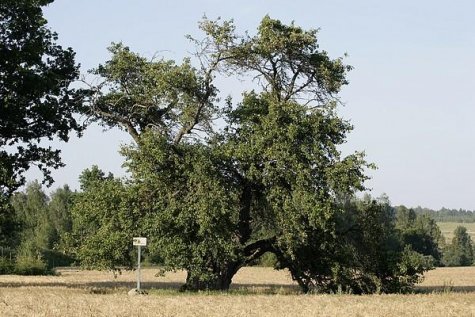Trees of the year – apple trees
Photo: Arne Ader
Translation: Liis
Oti crab apple
Crab apple Mets-õunapuu Malus sylvestris
More often than crab apples we meet escaped cultivated apples in nature as signs of old farmsteads, and on the verges of roads and stone walls because apple seeds germinate quite easily.
But an escaped cultivated apple variety will never turn into a crab apple.
Our largest crab apple tree grows in the Karksi primeval valley in Viljandimaa. The Oti crab apple tree is about two hundred years old, 18 metres high, the circumference of the trunk at 70 cm is 4,2 metres and the circumference of the crown is more than thirty metres.
Crab apple trees can grow as shrubs as well as large trees with dense and broad crowns that to the exterior remind of the familiar shape of cultivated apple trees.
It is easiest to distinguish between the species by their leaves. The underside of the leaves of the domesticated apple is strongly hairy, the underside of crab apple leaves is smooth; leaves are broadly egg-shaped with a heart-shaped base and toothed margins (only the bright green new leaves in spring are slightly hairy). In addition the crab apple has blunt-tipped spines on the branches.
The crab apple fruits have a diameter of up to three centimetres, they are small and round. Yellowish-green as ripe and the cheeks of fruits on the sunny side cam turn reddish, but the taste is very sour. The fruits hang on the trees even after frosts; in the old times they were used for food then because freezing improved the taste.
Cultivated apple trees originate from the wild apple Malus sieversii.









